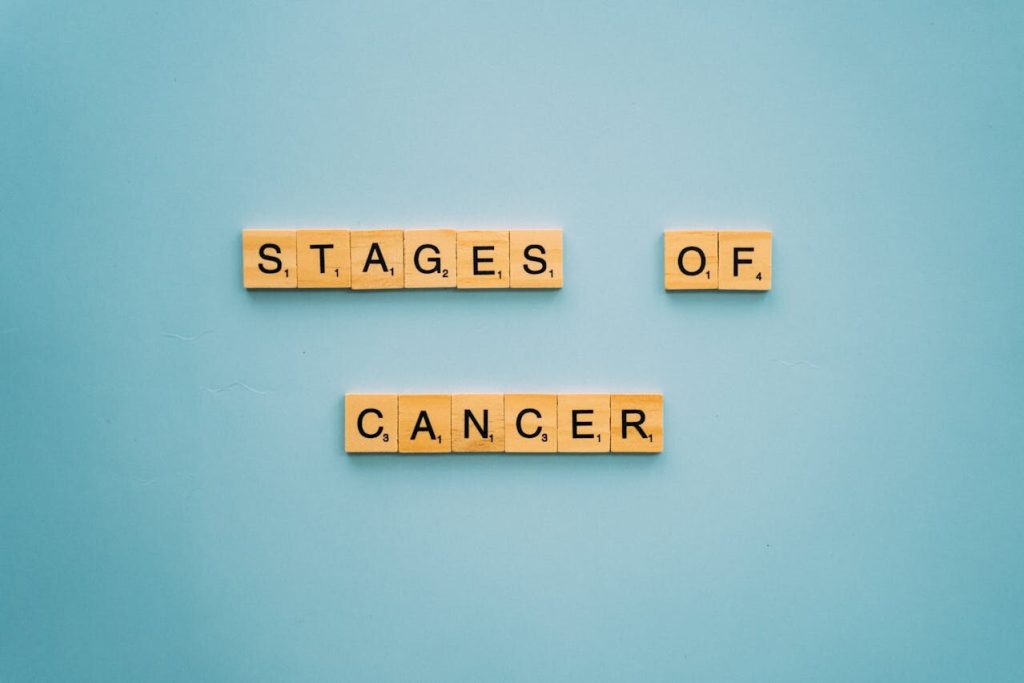Glioblastoma is a type of brain tumor that is highly aggressive and deadly. It affects the brain and spinal cord, and its symptoms can include headaches, seizures, and changes in cognitive function. Researchers have been working to better understand the underlying causes of glioblastoma in the hopes of developing more effective treatments to improve patient outcomes.
Knowing what causes a glioblastoma is essential for developing effective treatment options. This article will explore the genetic and environmental factors that have been linked to the development of glioblastoma, as well as the steps involved in tumor formation and the risk factors associated with this aggressive cancer.
Key Takeaways
- Glioblastoma is a highly aggressive and deadly type of brain tumor.
- Understanding the underlying causes of glioblastoma is crucial for developing more effective treatments.
- Genetic and environmental factors, as well as the steps involved in tumor formation and various risk factors, have been linked to the development of glioblastoma.
Genetic Causes of Glioblastoma
Glioblastoma is a highly aggressive brain tumor that is difficult to treat. While the exact causes of glioblastoma are not fully understood, research has identified several genetic mutations and alterations that are associated with an increased risk of developing this cancer.
One of the most commonly identified genetic mutations in glioblastoma is in the epidermal growth factor receptor (EGFR) gene. This mutation leads to the overexpression of the EGFR protein, which promotes tumor growth and proliferation. Another gene that has been implicated in glioblastoma is TP53, also known as the tumor protein p53. Studies have found that mutations in TP53 can disrupt cell cycle regulation and promote tumor formation.
Other genetic alterations that have been associated with an increased risk of glioblastoma include mutations in the IDH1 and IDH2 genes, as well as co-deletion of the CDKN2A and CDKN2B genes. These genetic changes are often found in a specific subtype of glioblastoma known as proneural glioblastoma.
Genetic Causes of Glioblastoma
Research into the genetic causes of glioblastoma is ongoing, with scientists continuing to investigate the role of various genes and genetic pathways in tumor development. Identifying these genetic factors may lead to new targeted therapies and personalized treatment options for individuals with glioblastoma.
Environmental Causes of Glioblastoma
While genetic factors may increase one’s susceptibility to glioblastoma, many cases of this brain tumor are thought to have environmental roots. Exposure to certain chemicals, toxins, and radiation have all been explored as potential risk factors for developing glioblastoma.
One such chemical is vinyl chloride, which is commonly used in the production of PVC pipes and other plastic products. Individuals who work in factories where vinyl chloride is used may be at an increased risk of developing glioblastoma, as studies have found an association between exposure to this chemical and the incidence of the brain tumor.
Pesticides are another environmental factor that has been linked to glioblastoma. Farmers and other agricultural workers who come into contact with these chemicals on a regular basis may be at a higher risk of developing the brain tumor. In particular, exposure to the herbicide glyphosate has been associated with an increased incidence of glioblastoma.
Finally, exposure to ionizing radiation is another established risk factor for glioblastoma. This type of radiation can come from a variety of sources, including therapeutic radiation used to treat other types of cancer, as well as non-therapeutic radiation from sources such as cell phones and power lines. While the relationship between non-therapeutic radiation and glioblastoma is still being studied, experts recommend taking precautions such as using hands-free devices when talking on cell phones and minimizing exposure to power lines and other sources of electromagnetic radiation.
Radiation and Glioblastoma
Radiation exposure is a known risk factor for developing glioblastoma, with therapeutic radiation being a significant source of exposure. Individuals who have received radiation therapy for other cancers, particularly those involving the head and neck, have an increased risk of developing glioblastoma. Non-therapeutic radiation, such as exposure to cell phones and power lines, has also been linked to an increased risk of developing brain tumors, although the evidence is less conclusive.
High-dose radiation therapy has been used as a treatment for glioblastoma, as it can kill cancer cells and shrink tumors. However, radiation therapy can also damage healthy brain tissue, leading to side effects such as fatigue, headaches, and cognitive impairment. Radiation therapy may also increase the risk of developing a secondary cancer in the future.
Recently, there has been interest in developing targeted radiation therapy, which can deliver radiation directly to the tumor while sparing healthy brain tissue. This approach may help to reduce the risk of side effects while improving treatment outcomes. Clinical trials are ongoing to evaluate the efficacy of targeted radiation therapy and other innovative approaches to glioblastoma treatment.
Glioblastoma Etiology: The Origins of Tumor Formation
Glioblastoma is a type of brain tumor that originates in the glial cells of the brain, specifically the astrocytes. These cells provide support and nourishment to the neurons in the brain and are crucial for its proper functioning. The process by which glioblastoma tumors form in the brain is complex and multifactorial, involving various biological and cellular changes.
The first step in glioblastoma formation is the accumulation of genetic mutations and alterations in the glial cells of the brain. These mutations can be inherited or acquired throughout a person’s lifetime. The mutations affect various genes, including those responsible for cell growth, division, and repair. This leads to uncontrolled cell growth and proliferation, eventually resulting in the formation of a tumor.
Environmental factors, such as exposure to certain toxins and radiation, can also contribute to glioblastoma formation. These factors can damage the DNA in the glial cells, leading to genetic mutations and alterations. Additionally, exposure to certain viruses and infections has also been linked to an increased risk of glioblastoma.
Once the genetic mutations and environmental factors have initiated the formation of a glioblastoma tumor, a variety of cellular changes occur within the tumor that allow it to continue growing and spreading. The tumor cells begin to produce their own blood vessels to ensure a constant blood supply, a process called angiogenesis. They also secrete chemicals that prevent the immune system from recognizing and attacking the tumor, a process known as immunosuppression.
Understanding the complex etiology of glioblastoma is crucial for developing effective treatment strategies. By targeting the genetic mutations and environmental factors involved in tumor formation, it may be possible to prevent or slow the progression of glioblastoma. Additionally, targeting the cellular changes that allow the tumor to grow and spread may improve treatment outcomes and overall survival rates.
Risk Factors for Glioblastoma
Glioblastoma, a highly aggressive brain tumor, is known to affect individuals of all ages, genders, and ethnicities. However, certain risk factors have been identified that may increase an individual’s likelihood of developing this tumor. It is important to understand these risk factors to better assess the chances of developing glioblastoma.
Age
One of the primary risk factors associated with glioblastoma is age. Generally, individuals over the age of 60 are more susceptible to developing this type of brain tumor. While glioblastoma can affect people of all ages, it is much more common in older adults.
Gender
Studies have shown that men are more likely to develop glioblastoma than women. However, the reasons for this difference are not yet fully understood.
Family history
Individuals with a family history of glioblastoma may be at increased risk of developing the tumor themselves. Studies suggest that certain genetic mutations may be inherited and can increase the likelihood of developing glioblastoma.
Previous medical conditions
Previous medical conditions such as neurofibromatosis, Li-Fraumeni syndrome, and tuberous sclerosis have been linked to an increased risk of glioblastoma. Individuals with these conditions may be advised to undergo regular screenings to monitor for signs of the tumor’s development.
Conclusion
While the exact cause of glioblastoma is not yet fully understood, several risk factors have been identified that may increase the likelihood of developing this devastating brain tumor. By understanding these risk factors, individuals can take steps to reduce their risk and seek medical attention if they experience any symptoms associated with glioblastoma.
Holistic Treatment Modalities at the Cancer Center for Healing
The Cancer Center for Healing, located in Irvine, CA, is a leading facility for holistic cancer care. Under the guidance of medical director Dr. Leigh Erin Connealy, the center offers a comprehensive approach to cancer treatment that incorporates both conventional and alternative therapies.
At the Cancer Center for Healing, glioblastoma patients have access to a wide range of holistic treatment modalities. These include:
| Treatment Modality | Description |
|---|---|
| Targeted Therapies | Personalized treatments designed to attack cancer cells while minimizing damage to healthy tissue. |
| Immunotherapy | Treatments that use the body’s immune system to attack cancer cells. |
| Nutritional Support | Dietary plans and supplements designed to support overall health and recovery. |
| Complementary Therapies | Treatments such as acupuncture and massage therapy that can enhance well-being and alleviate side effects of treatment. |
By combining these modalities in a personalized treatment plan, the Cancer Center for Healing aims to address the root causes of cancer and support the body’s natural healing processes. Patients receive comprehensive care that addresses not just their cancer, but their overall health and well-being.
Holistic Treatment Modalities at the Cancer Center for Healing
“The Cancer Center for Healing is the only place that gave me hope when I was diagnosed with glioblastoma. Their comprehensive approach to treatment was exactly what I needed to support my recovery.” – Sarah, former patient
The success stories of patients who have received treatment for glioblastoma at the Cancer Center for Healing speak to the effectiveness of this approach. With the help of Dr. Connealy and her team of skilled practitioners, patients have achieved improved quality of life and successful treatment outcomes.
If you or a loved one is facing a diagnosis of glioblastoma, consider the Cancer Center for Healing as a resource for comprehensive and holistic cancer care.
The Comprehensive Approach to Cancer Care
The Cancer Center for Healing takes a comprehensive approach to cancer care, integrating conventional and alternative therapies to support patients’ overall health and well-being. They recognize that each patient’s cancer journey is unique and tailor personalized treatment plans to address their individual needs and concerns.
This approach includes identifying and addressing the root causes of cancer, such as environmental toxins and emotional stressors, in addition to treating the cancer itself. The center’s philosophy is to support the body’s natural healing mechanisms and provide a supportive environment for patients to thrive.
At the Cancer Center for Healing, patients receive a combination of targeted therapies, immunotherapy, and nutritional support to enhance treatment outcomes. Complementary therapies such as acupuncture, massage, and meditation are also offered to support patients’ physical and emotional well-being.
Dr. Leigh Erin Connealy, the founder and medical director of the Cancer Center for Healing, has over three decades of experience practicing complementary and integrative medicine. Her expertise, combined with the center’s comprehensive approach, makes the Cancer Center for Healing a leading destination for cancer care.
Glioblastoma Treatment Options at the Cancer Center for Healing
The Cancer Center for Healing in Irvine, CA offers a comprehensive approach to treating glioblastoma, utilizing a range of modalities to enhance treatment outcomes and support overall healing and well-being. Depending on the specific needs and circumstances of each patient, the center may recommend one or more of the following treatment options:
| Targeted Therapies | The Cancer Center for Healing offers targeted therapies that focus on specific genes or proteins that play a role in glioblastoma development. This helps to minimize damage to healthy cells and maximize the effectiveness of treatment. |
|---|---|
| Immunotherapy | Immune system-based therapies can be used to stimulate the body’s natural defenses against glioblastoma cells. This may involve the use of vaccines, checkpoint inhibitors, or adoptive cell transfer. |
| Nutritional Support | The Cancer Center for Healing recognizes the importance of proper nutrition in supporting overall health and well-being during cancer treatment. They offer customized nutrition plans that are designed to support the individual needs of each patient. |
| Complementary Therapies | The center offers a range of complementary therapies, such as yoga, massage, and acupuncture, to help manage symptoms and side effects of glioblastoma treatment. |
At the Cancer Center for Healing, treatment plans are personalized, taking into account the specific needs and circumstances of each patient. This comprehensive approach to glioblastoma treatment helps to improve outcomes and enhance overall well-being.
Making an Appointment at the Cancer Center for Healing
To schedule a consultation at the Cancer Center for Healing with Dr. Leigh Erin Connealy, call 949-680-1880. The Cancer Center for Healing is located at 6 Hughes in Irvine, CA.
Medical Expertise at the Cancer Center for Healing
The Cancer Center for Healing in Irvine, CA boasts a team of highly qualified and experienced medical professionals, with Dr. Leigh Erin Connealy leading the charge. As the center’s medical director, Dr. Connealy brings over three decades of experience in integrative and functional medicine to her practice, with a particular focus on cancer care.
Dr. Connealy is board-certified in medical oncology and hematology, and has extensive training in integrative medicine, including acupuncture, chelation therapy, and oxidative medicine. She has authored two books on cancer prevention and treatment, and is a sought-after speaker and educator on the topic of integrative cancer care.
Patient Testimonials and Success Stories
At the Cancer Center for Healing, patient care is at the forefront of their comprehensive approach to cancer treatment. Many individuals have received treatment for glioblastoma at the center and have shared their success stories. These testimonials provide hope to those who may be facing a similar diagnosis.
“The Cancer Center for Healing was a game changer for me. When I was diagnosed with glioblastoma, I was devastated. But Dr. Connealy and her team provided a customized treatment plan that combined conventional and alternative therapies. I’m happy to say that I’ve been in remission for over a year now.” – John, glioblastoma survivor
These stories are a testament to the expertise and dedication of Dr. Leigh Erin Connealy and her team. The Cancer Center for Healing not only offers cutting-edge treatments but also a compassionate approach to care.
“When my husband was diagnosed with glioblastoma, we were overwhelmed. The Cancer Center for Healing provided us with the guidance and support we needed during this difficult time. Their holistic approach to care helped my husband manage his symptoms and improve his quality of life.” – Karen, caregiver
These stories emphasize the importance of finding a healthcare provider who truly cares and takes a personalized approach to treatment. The Cancer Center for Healing provides a supportive environment for patients and their families throughout their cancer journey.
Ongoing Research and Advancements in Glioblastoma Treatment
Despite the challenges in treating glioblastoma, ongoing research and advancements offer hope for improved outcomes. Researchers are exploring a range of therapies and treatment approaches, including targeted therapies, immunotherapies, and combination therapies.
One promising area of research is the development of vaccines that help the immune system recognize and attack glioblastoma cells. Several clinical trials are currently underway to test the safety and effectiveness of these vaccines.
Another area of research focuses on identifying new targets for drug therapies. For example, researchers have discovered that glioblastoma cells rely on a protein called MDM2 to survive. Drugs that target this protein are currently being tested in clinical trials.
In addition to these approaches, researchers are also investigating the potential of using gene therapy to treat glioblastoma. This involves delivering genetic material to glioblastoma cells to help them better respond to other treatments, such as radiation or chemotherapy.
While more research is needed, these promising areas of investigation provide hope for improved outcomes and the eventual development of more effective treatments for glioblastoma.
Support and Resources for Glioblastoma Patients and Caregivers
Dealing with a glioblastoma diagnosis can be overwhelming, not only for the patient but also for their family and friends. Fortunately, there are various support and resources available to help navigate through this challenging time.
Support groups can be an excellent source of emotional and practical support. These groups connect glioblastoma patients and caregivers with others who are going through similar experiences, providing a safe space to share feelings, coping strategies, and information. The American Brain Tumor Association and the National Brain Tumor Society are two organizations that offer support groups and other resources for glioblastoma patients and caregivers.
Education is critical when dealing with a glioblastoma diagnosis. Patients and caregivers need to be informed about the disease, treatment options, and potential side effects. The National Cancer Institute offers easy-to-understand educational materials on their website, covering a wide range of cancer-related topics, including glioblastoma.
Financial assistance may also be necessary for some patients and their families. The Cancer Financial Assistance Coalition is a nonprofit organization that provides financial resources and assistance for cancer patients. This organization can help with medical bills, transportation costs, and other expenses related to cancer treatment.
Finally, it’s important to remember that taking care of oneself is just as crucial as addressing the medical aspects of glioblastoma. Engaging in activities that bring joy and relaxation, such as exercise, meditation, or spending time in nature, can promote overall well-being and quality of life.
Coping with a Glioblastoma Diagnosis
Receiving a glioblastoma diagnosis can be overwhelming and emotional. Coping with the diagnosis requires a holistic approach that addresses the patient’s physical, emotional, and practical needs. Here are some tips for coping with a glioblastoma diagnosis:
- Seek support: Reach out to family, friends, and support groups. Lean on those around you for emotional support and guidance.
- Take care of yourself: Eat a healthy diet, get plenty of rest, and engage in physical activity as much as possible. This can help improve your overall well-being and potentially improve treatment outcomes.
- Stay informed: Stay updated on the latest research and treatment options. Knowledge can help alleviate anxiety and empower you to make informed decisions about your care.
- Communicate with your healthcare team: Keep an open dialogue with your healthcare team and ask questions. They can provide guidance and support throughout your treatment journey.
- Explore complementary therapies: Consider incorporating complementary therapies such as acupuncture, massage, and meditation into your care plan to help manage symptoms and promote relaxation.
- Stay positive: Maintaining a positive attitude can have a significant impact on overall well-being and potentially improve treatment outcomes.
“Remember, you are not alone in this journey. Seek support, take care of yourself, and stay positive. There is hope for a brighter future.”
Conclusion
In conclusion, glioblastoma is a devastating brain tumor that requires a comprehensive approach to treatment. It is important to understand the various factors that contribute to its development, including genetics, environmental factors, and radiation exposure. The Cancer Center for Healing, located in Irvine, CA, offers a holistic approach to cancer care, with a focus on personalized treatment plans that integrate conventional and alternative therapies.
Individuals diagnosed with glioblastoma can find hope in the ongoing research and advancements in treatment options. It is also important for patients and their families to seek out support and resources to navigate through this difficult time.
If you or a loved one are facing a glioblastoma diagnosis, scheduling a consultation with Dr. Leigh Erin Connealy at the Cancer Center for Healing may provide the comprehensive care you need. With a focus on addressing the root causes of cancer and supporting overall well-being, the Cancer Center for Healing offers hope for a brighter future.
FAQ
Q: What causes a glioblastoma?
A: Glioblastoma can be caused by a combination of genetic and environmental factors, as well as radiation exposure. The specific causes may vary from person to person.
Q: What are the genetic causes of glioblastoma?
A: Genetic mutations and alterations, such as those in genes like EGFR and TP53, have been associated with an increased risk of developing glioblastoma.
Q: What are the environmental causes of glioblastoma?
A: Exposure to certain chemicals, toxins, and radiation has been linked to an increased risk of developing glioblastoma.
Q: How does radiation contribute to glioblastoma?
A: Both therapeutic radiation, such as radiation therapy for other cancers, and non-therapeutic radiation, including exposure to cell phones and power lines, have been studied for their potential correlation with glioblastoma development.
Q: What is the etiology of glioblastoma?
A: Glioblastoma formation involves a step-by-step process in which biological mechanisms and cellular changes lead to tumor initiation and progression in the brain.
Q: What are the risk factors for glioblastoma?
A: Risk factors for glioblastoma include age, gender, family history, and previous medical conditions. These factors may increase an individual’s likelihood of developing this aggressive brain tumor.
Q: What holistic treatment modalities are available at the Cancer Center for Healing?
A: The Cancer Center for Healing offers comprehensive holistic treatment modalities for various types of cancer, including glioblastoma. Dr. Leigh Erin Connealy is a leading expert at the center.
Q: What is the comprehensive approach to cancer care at the Cancer Center for Healing?
A: The Cancer Center for Healing integrates conventional and alternative therapies, creates personalized treatment plans, and focuses on addressing the root causes of cancer to support overall healing and well-being.
Q: What glioblastoma treatment options are available at the Cancer Center for Healing?
A: The Cancer Center for Healing offers a range of treatment options for glioblastoma, including targeted therapies, immunotherapy, nutritional support, and complementary therapies that are used in conjunction to enhance treatment outcomes.
Q: How can I make an appointment at the Cancer Center for Healing?
A: To schedule a consultation at the Cancer Center for Healing with Dr. Leigh Erin Connealy, please contact our office using the provided contact details.
Q: Who is Dr. Leigh Erin Connealy?
A: Dr. Leigh Erin Connealy is a highly qualified and experienced medical professional specializing in the treatment of various types of cancer. She is an expert at the Cancer Center for Healing.
Q: Are there any patient testimonials and success stories from the Cancer Center for Healing?
A: Yes, the Cancer Center for Healing has numerous patient testimonials and success stories from individuals who have received treatment for glioblastoma and other types of cancer. These stories highlight positive experiences and successful outcomes.
Q: What ongoing research and advancements are there in glioblastoma treatment?
A: Ongoing research in glioblastoma treatment continues to explore emerging therapies, clinical trials, and promising advancements that offer hope for improved outcomes in the future.
Q: What support and resources are available for glioblastoma patients and caregivers?
A: Various support groups, educational materials, and organizations exist to provide assistance and guidance to glioblastoma patients and their caregivers throughout their treatment journey.
Q: How can one cope with a glioblastoma diagnosis?
A: Coping with a glioblastoma diagnosis can be challenging. This section provides practical tips and strategies for addressing the emotional, psychological, and practical aspects of the diagnosis.






